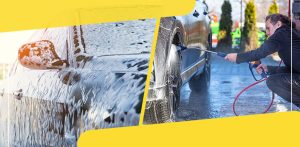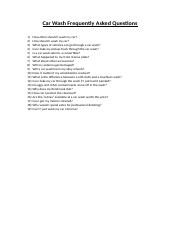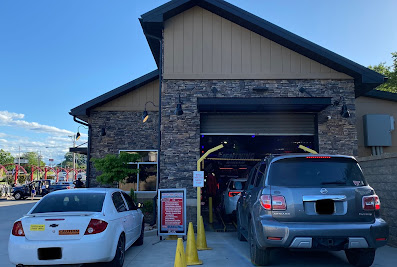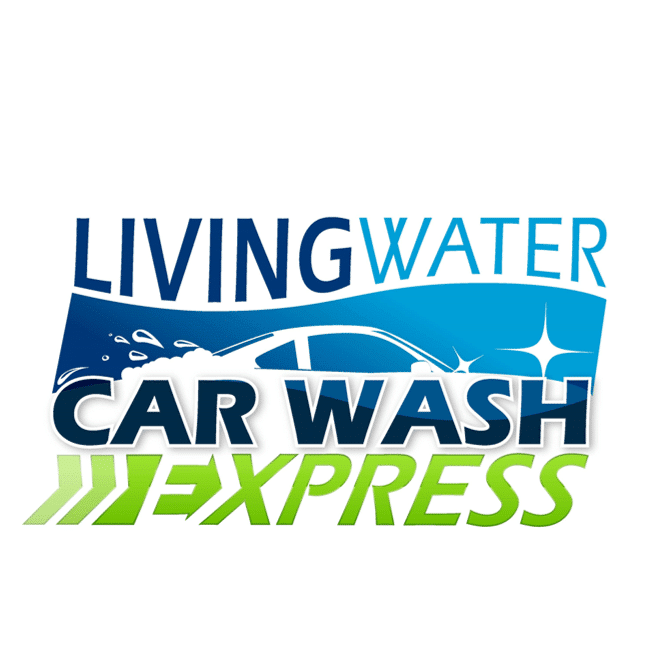
Have you ever driven away from a self-service car wash feeling like you could have done a better job? Maybe you still had streaks, or perhaps you felt like you spent more money than necessary. Washing your car yourself can be a rewarding experience, a chance to connect with your vehicle and save some money in the process. However, mastering the art of the self-service car wash takes a little know-how. It’s not just about pointing the wand and hoping for the best.
It’s about understanding the process, using the right techniques, and knowing how to get the most out of the available tools. From pre-soaking to waxing, each step plays a crucial role in achieving a clean and shiny finish. A haphazard approach can lead to subpar results and wasted time and money. But don’t worry! With a little preparation and the right guidance, you can transform your self-service car wash experience from frustrating to fulfilling.
Imagine pulling away from the car wash with your vehicle gleaming, turning heads as you drive down the street. That’s the power of knowing what you’re doing. It’s not about being a professional detailer; it’s about understanding the basics and applying them effectively. It’s about taking pride in your car and knowing that you’ve given it the best possible care.
This guide is designed to empower you with the knowledge and skills you need to achieve that showroom shine at your local self-service car wash. We’ll walk you through each step, from pre-wash preparation to the final touches, providing tips and tricks along the way. By following these guidelines, you’ll not only save money but also achieve a level of cleanliness that rivals a professional detailing job.
So, get ready to roll up your sleeves and learn **How to Maximize Your Self-Service Car Wash**. We’ll delve into everything from selecting the right wash bay to mastering the art of the spot-free rinse. Get ready to transform your car washing routine and make your vehicle sparkle!
Pre-Wash Preparation: Setting the Stage for Success
Gathering Your Supplies: The Car Washer’s Arsenal
Before you even pull into the wash bay, it’s essential to gather the right supplies. While the car wash provides the basics, having a few of your own items can significantly improve the outcome. Consider a microfiber wash mitt, a dedicated wheel and tire cleaner, and a detailing brush. These will allow you to address specific areas of your car more effectively.
A high-quality microfiber wash mitt is gentler on your car’s paint than the brushes often found at self-service car washes. This helps to prevent swirl marks and scratches. The wheel and tire cleaner will remove stubborn brake dust and grime, leaving your wheels looking their best. And the detailing brush is perfect for cleaning hard-to-reach areas like emblems and trim.
Don’t forget a bucket! This is useful for rinsing your wash mitt, keeping it clean and preventing the transfer of dirt back onto your car’s surface. You might also want to bring a few clean microfiber towels for drying. Having these items on hand will ensure that you’re well-equipped to tackle any cleaning challenge.
Think of it like preparing for a battle against dirt and grime. The better your preparation, the more effective your cleaning efforts will be. Taking the time to gather the right supplies is an investment in the cleanliness and longevity of your car’s finish.
Remember to keep your supplies organized in a container or bag for easy access. This will save you time and frustration when you arrive at the car wash. A little preparation goes a long way in achieving a professional-looking clean.
Assessing Your Vehicle’s Condition: Know Your Enemy
Before diving into the wash process, take a moment to assess your vehicle’s condition. Identify areas with heavy dirt, bug splatter, or bird droppings. These areas will require extra attention during the pre-soak and wash phases. Understanding the specific challenges you face will help you tailor your cleaning approach for optimal results.
Look for areas where dirt tends to accumulate, such as behind the wheels, along the rocker panels, and around the bumpers. These areas often require more thorough cleaning. Also, pay attention to any specific stains or spots that need special treatment.
By identifying these problem areas beforehand, you can plan your cleaning strategy accordingly. This will help you avoid wasting time and money on areas that don’t need as much attention. It’s all about being efficient and effective in your approach.
Consider taking a quick walk around your car and making a mental note of any particularly dirty spots. This will help you prioritize your cleaning efforts and ensure that you address all the key areas.
Remember, a little observation goes a long way. By assessing your vehicle’s condition before you start washing, you’ll be better prepared to tackle the cleaning process and achieve a superior result.
Choosing the Right Wash Bay: Location, Location, Location
Not all wash bays are created equal. When selecting a wash bay, consider factors such as sunlight and water pressure. Avoid bays that are directly in the sun, as this can cause the soap to dry too quickly, leaving streaks. Also, check the water pressure to ensure it’s adequate for effective cleaning.
Look for a bay that is shaded or partially shaded, especially during the hottest parts of the day. This will help prevent the soap from drying too quickly and making your job more difficult.
The water pressure is also a critical factor. Low water pressure can make it difficult to rinse away the soap and dirt effectively. If you notice that the water pressure is weak, try a different bay.
Consider the position of the bay relative to other cars. Choose a bay that allows you enough space to move around your vehicle freely without bumping into other cars or obstacles.
Finally, check the condition of the equipment in the bay. Make sure the wand and hoses are in good working order and that all the functions are operating correctly. A well-maintained wash bay will make your job much easier and more enjoyable.
The Wash Process: Step-by-Step to a Spotless Finish
Pre-Soak: Loosening the Grime
The pre-soak is a crucial step in the self-service car wash process. It helps to loosen dirt and grime, making it easier to remove during the wash phase. Use the pre-soak setting on the wand and apply it liberally to your vehicle, paying particular attention to areas with heavy dirt or bug splatter. Allow the pre-soak to dwell on the surface for a few minutes before rinsing.
The dwell time allows the pre-soak solution to penetrate the dirt and grime, breaking it down and making it easier to remove. However, be careful not to let the pre-soak dry on the surface, as this can leave streaks or water spots.
Focus on areas that are particularly dirty, such as the lower panels of your car, the wheels, and the front bumper. These areas tend to accumulate the most dirt and grime.
When applying the pre-soak, use a sweeping motion to ensure that you cover all surfaces evenly. Don’t forget to spray the wheel wells and undercarriage to remove any accumulated dirt and debris.
The pre-soak is your first line of defense against dirt and grime. By taking the time to apply it properly, you’ll make the subsequent wash phase much more effective and efficient.
Soap Application: The Main Event
Once the pre-soak has done its work, it’s time to apply the soap. Using the soap setting on the wand, apply the soap liberally to your vehicle, starting from the top and working your way down. Use overlapping strokes to ensure that you cover all surfaces evenly. If you brought your own wash mitt and bucket, now is the time to use them, otherwise use the brush provided at the wash.
If you’re using your own wash mitt, dip it frequently into the bucket of clean water to rinse away any dirt and grime. This will prevent you from scratching your car’s paint.
When applying the soap, pay attention to areas that are particularly dirty or greasy. These areas may require a little extra scrubbing.
Work in sections to prevent the soap from drying on the surface. Apply the soap to one section of the car, wash it thoroughly, and then move on to the next section.
The soap is your primary cleaning agent, so it’s important to apply it properly. By using a liberal amount of soap and working in sections, you’ll ensure that you remove all the dirt and grime from your car’s surface.
High-Pressure Rinse: Washing Away the Grime
After applying the soap, it’s time to rinse it off using the high-pressure rinse setting on the wand. Start from the top of your vehicle and work your way down, using overlapping strokes to ensure that you remove all traces of soap. Pay particular attention to areas where soap tends to accumulate, such as around the trim and emblems.
Hold the wand at a slight angle to the surface of the car to maximize the cleaning power of the high-pressure rinse. This will help to dislodge any remaining dirt and grime.
Be careful not to hold the wand too close to the surface of the car, as this can damage the paint. Maintain a safe distance of about 12 inches.
Rinse thoroughly to ensure that all the soap is removed. Any remaining soap can leave streaks or water spots.
The high-pressure rinse is essential for removing all the soap and grime from your car’s surface. By using the correct technique and rinsing thoroughly, you’ll achieve a clean and spotless finish.
Addressing Special Areas: Wheels, Tires, and Engine Bay
Wheel and Tire Cleaning: Bringing Back the Shine
Wheels and tires often get overlooked during the car wash process, but they can make a big difference in the overall appearance of your vehicle. Use a dedicated wheel and tire cleaner to remove brake dust and grime. Spray the cleaner onto the wheels and tires, let it dwell for a few minutes, and then scrub with a wheel brush. Rinse thoroughly with the high-pressure rinse.
Brake dust is particularly stubborn, so you may need to use a little extra elbow grease to remove it completely. A dedicated wheel brush will help you reach all the nooks and crannies of the wheels.
When cleaning your tires, be sure to scrub the sidewalls thoroughly to remove any dirt and grime. You can also use a tire shine product to enhance the appearance of your tires.
Rinse thoroughly to remove all traces of the wheel and tire cleaner. Any remaining cleaner can damage the wheels or tires.
Clean wheels and tires can significantly improve the overall appearance of your vehicle. By taking the time to clean them properly, you’ll add a touch of class to your ride.
Engine Bay Rinse (If Applicable): Proceed with Caution
Some self-service car washes offer an engine bay rinse option. If you choose to use this option, proceed with caution. Avoid spraying sensitive components such as the battery, alternator, and wiring harness. Use a gentle spray and avoid high-pressure water. The engine bay can be very delicate and high pressure could cause damage.
The goal of the engine bay rinse is to remove loose dirt and debris. It’s not intended to be a deep cleaning.
If you’re not comfortable rinsing the engine bay yourself, it’s best to leave it to a professional.
After rinsing the engine bay, start your car and let it run for a few minutes to dry out any moisture.
Rinsing the engine bay can improve the appearance of your car and help to prevent corrosion. However, it’s important to proceed with caution and avoid damaging any sensitive components.
Detailing Brush for Emblems and Trim: The Finishing Touches
A detailing brush is an invaluable tool for cleaning emblems and trim. These areas often accumulate dirt and grime that can be difficult to remove with a wash mitt or sponge. Use the detailing brush to gently scrub around the edges of emblems and trim, removing any stubborn dirt. Rinse thoroughly with the high-pressure rinse.
The detailing brush allows you to reach into tight spaces and clean areas that are otherwise inaccessible.
Use a gentle touch to avoid scratching the emblems or trim.
Rinse thoroughly to remove all traces of dirt and grime.
Cleaning the emblems and trim is a small detail that can make a big difference in the overall appearance of your car. These finishing touches will help to give your car a polished and professional look.
Waxing and Drying: Protecting Your Investment
Wax Application (If Desired): Adding a Layer of Protection
If you want to add a layer of protection to your car’s paint, consider applying a wax. Some self-service car washes offer a wax setting on the wand. If so, apply the wax evenly to your vehicle, following the instructions on the wand. Alternatively, you can apply your own wax after the car wash.
Wax helps to protect your car’s paint from the elements, such as sun, rain, and dirt. It also gives your car a glossy shine.
If you’re using the wax setting on the wand, be sure to apply it evenly to all surfaces.
If you’re applying your own wax, follow the instructions on the product label.
Waxing your car is a great way to protect your investment and keep it looking its best.
Spot-Free Rinse: Eliminating Water Spots
The spot-free rinse is a crucial step in preventing water spots. This rinse uses purified water that is free of minerals, which can cause unsightly spots as the water dries. Apply the spot-free rinse liberally to your entire vehicle, ensuring that you cover all surfaces.
The spot-free rinse will help to give your car a clean and polished look.
Be sure to apply the spot-free rinse evenly to all surfaces.
Don’t skip the spot-free rinse, as it can make a big difference in the final result.
Using the spot-free rinse is a simple and effective way to prevent water spots and keep your car looking its best.
Drying Techniques: Preventing Water Spots and Streaks
Even with a spot-free rinse, it’s still a good idea to dry your car to prevent water spots and streaks. Use clean microfiber towels to dry your vehicle, starting from the top and working your way down. Use a blotting motion rather than wiping, as this will help to prevent swirl marks.
Microfiber towels are gentle on your car’s paint and will help to absorb water quickly and effectively.
Use a separate towel for the wheels and tires, as these areas tend to be dirtier.
Pay attention to areas where water tends to accumulate, such as around the trim and emblems.
Drying your car properly is essential for achieving a clean and spotless finish. By using the right techniques and tools, you’ll be able to prevent water spots and streaks and keep your car looking its best. Now you know **How to Maximize Your Self-Service Car Wash**!
Cost-Saving Tips: Making Your Money Go Further
Timing Your Visit: Avoiding Peak Hours
Self-service car washes are often busier during peak hours, such as weekends and evenings. To save money and avoid crowds, try to visit during off-peak hours, such as weekdays or early mornings.
You’ll often find that the car wash is less crowded during off-peak hours, which means you’ll have more time to wash your car and won’t feel rushed.
Some car washes may also offer discounts during off-peak hours.
Visiting during off-peak hours is a great way to save money and avoid crowds.
Planning ahead and timing your visit can save money and give you a more enjoyable car washing experience.
Using the Right Amount of Time: Efficient Cleaning
Avoid overspending by using the right amount of time for each function. Don’t leave the wand running unnecessarily. Use the pause function when switching between settings or moving around your vehicle. Be mindful of the timer and adjust your cleaning accordingly.
Many people tend to waste money by letting the wand run unnecessarily. By being mindful of the timer and using the pause function, you can save a significant amount of money.
Plan your cleaning strategy in advance to ensure that you use your time efficiently.
Efficient cleaning is not just about saving money; it’s also about being respectful of other customers.
By using the right amount of time and cleaning efficiently, you can save money and contribute to a more positive car washing experience for everyone.
Bringing Your Own Supplies: Saving on Extras
As mentioned earlier, bringing your own supplies can save you money. You won’t have to rely on the often-overpriced supplies offered at the car wash. This includes your own wash mitt, wheel cleaner, and drying towels. You now have all the tips on **How to Maximize Your Self-Service Car Wash**.
The supplies offered at self-service car washes are often of lower quality and more expensive than those you can purchase yourself.
Bringing your own supplies allows you to choose products that you trust and that are best suited for your car.
Investing in high-quality car washing supplies is a worthwhile investment that will pay off in the long run.
By bringing your own supplies, you’ll not only save money but also achieve a better cleaning result.
Conclusion
Mastering the self-service car wash is a rewarding experience that can save you money and give you a gleaming vehicle. By following the tips and techniques outlined in this guide, you’ll be well-equipped to achieve a professional-looking clean every time. Remember to prepare thoroughly, use the right techniques, and pay attention to the details.
From pre-wash preparation to the final drying touches, each step plays a crucial role in achieving a spotless finish. Don’t be afraid to experiment and find what works best for you and your vehicle.
With a little practice and the right knowledge, you’ll be able to transform your self-service car wash routine from a chore to a rewarding and enjoyable experience.
So, go out there and put these tips into practice. Your car will thank you for it!
Interested in other car care tips and tricks? Check out our other articles on detailing, maintenance, and more!


